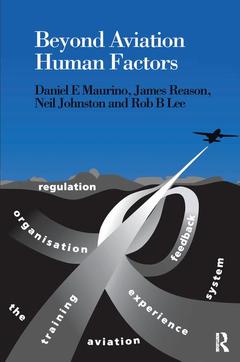Description
Beyond Aviation Human Factors
Safety in High Technology Systems
Authors: Maurino Daniel E., Reason James, Johnston Neil, Lee Rob B.
Language: English
Subject for Beyond Aviation Human Factors:
Keywords
Unsafe Acts; Accident Investigation; unsafe; Aviation Human Factors; acts; Latent Organizational Failures; latent; Latent Failure; failures; Latent Failure Pathway; organizational; Flight Crew; flight; Crew; CFIT Accident; failure; Air Ontario; pathway; IFR; air; Air Ontario Crash; Transport Canada; Thunder Bay; McMurdo Sound; Air Traffic Management; Factors Factors Factors Factors Factors; Flight Progress Strips; Aircraft Accident Report; Mount Erebus; Air Ontario Flight; Air Traffic Services; Air Safety Investigation; Air Canada; Cabin Crew
Approximative price 278.07 €
In Print (Delivery period: 14 days).
Add to cart· 15.6x23.4 cm · Hardback
Description
/li>Contents
/li>Readership
/li>Biography
/li>
These books may interest you

Barriers and Accident Prevention 89.97 €



